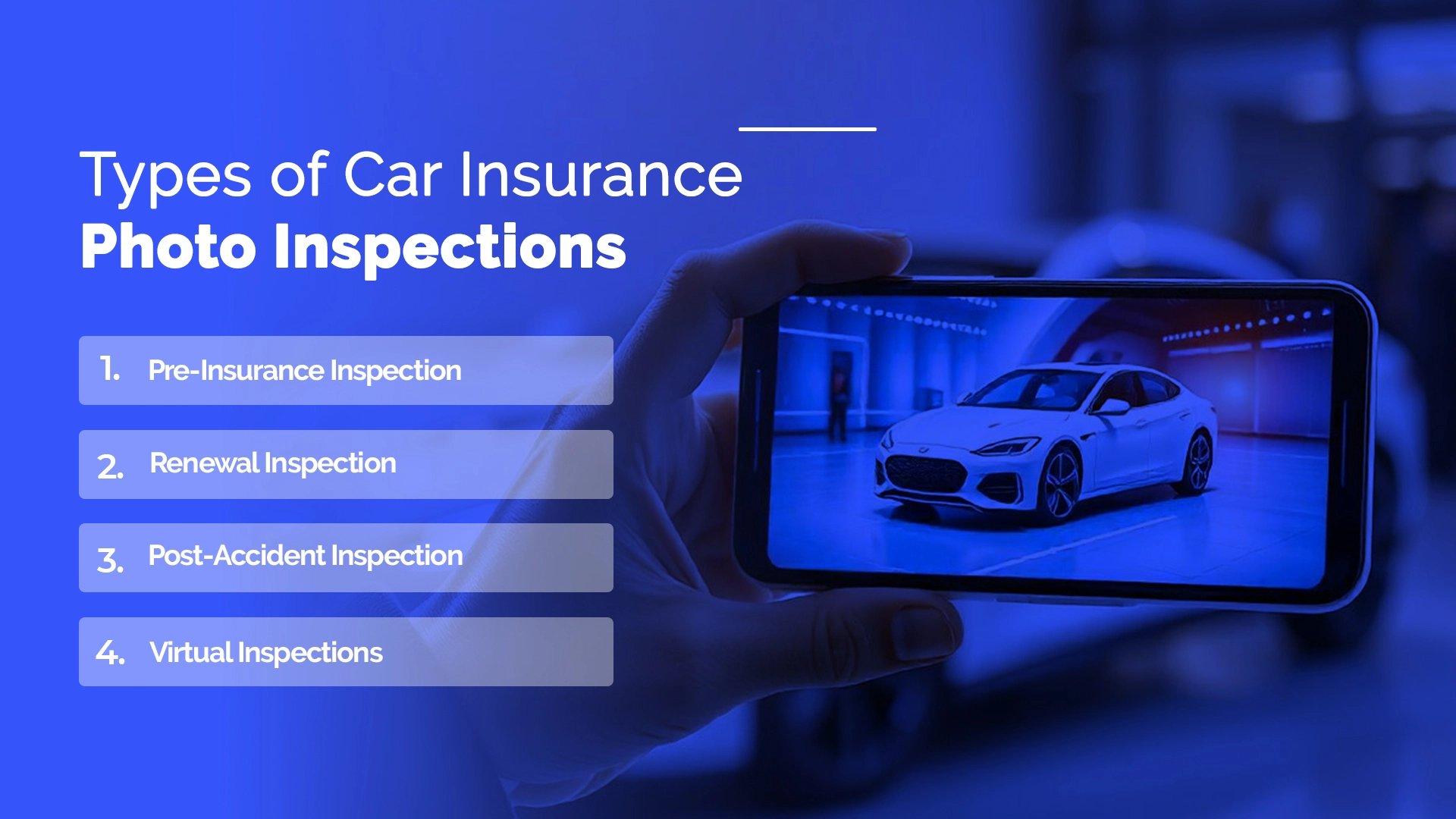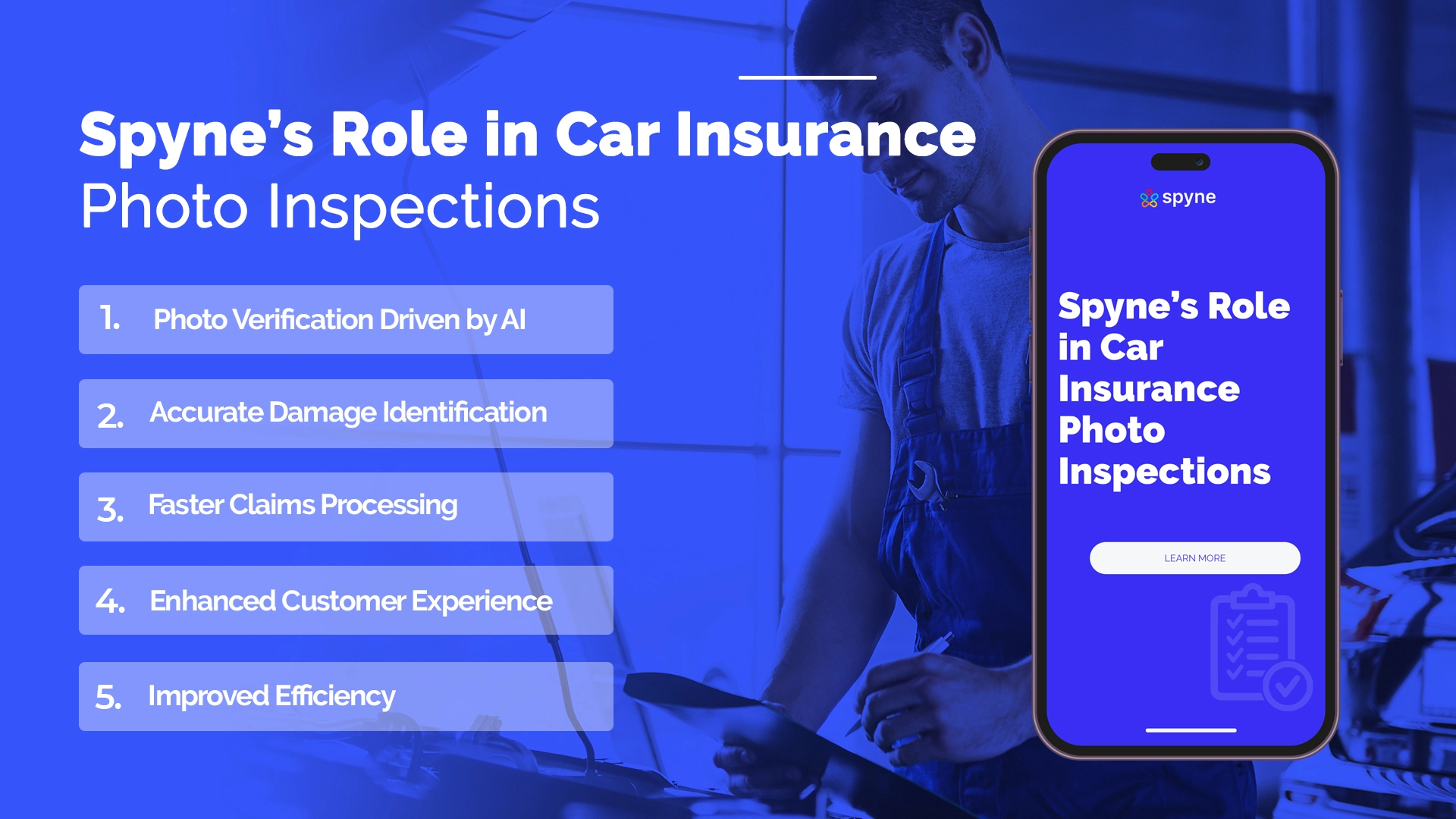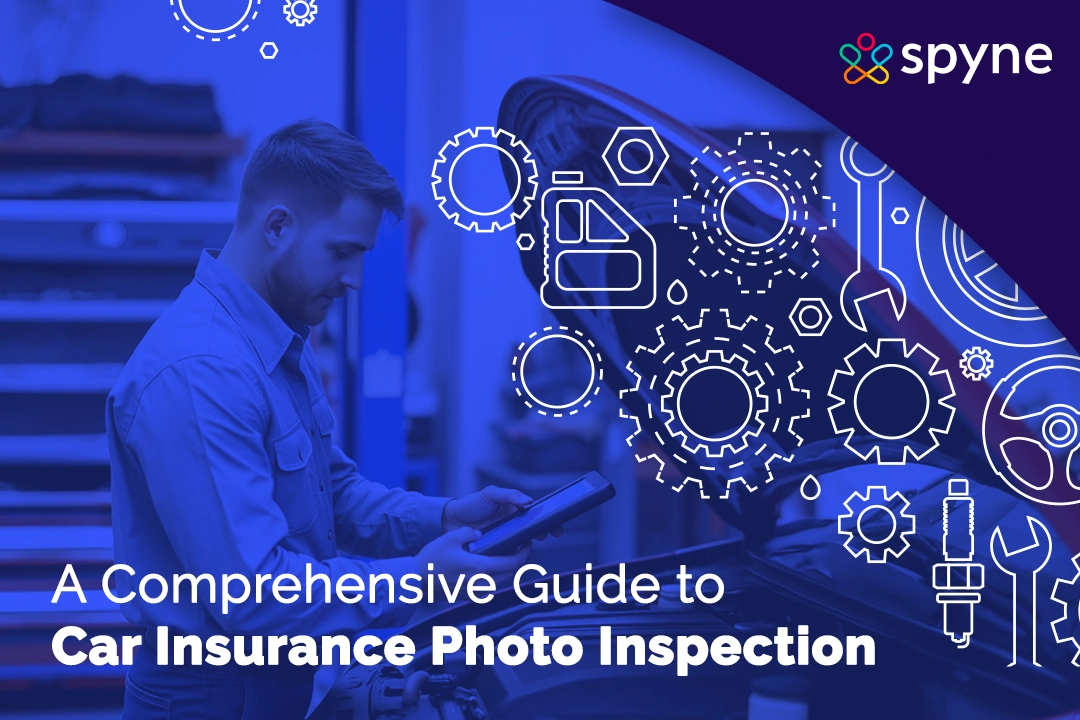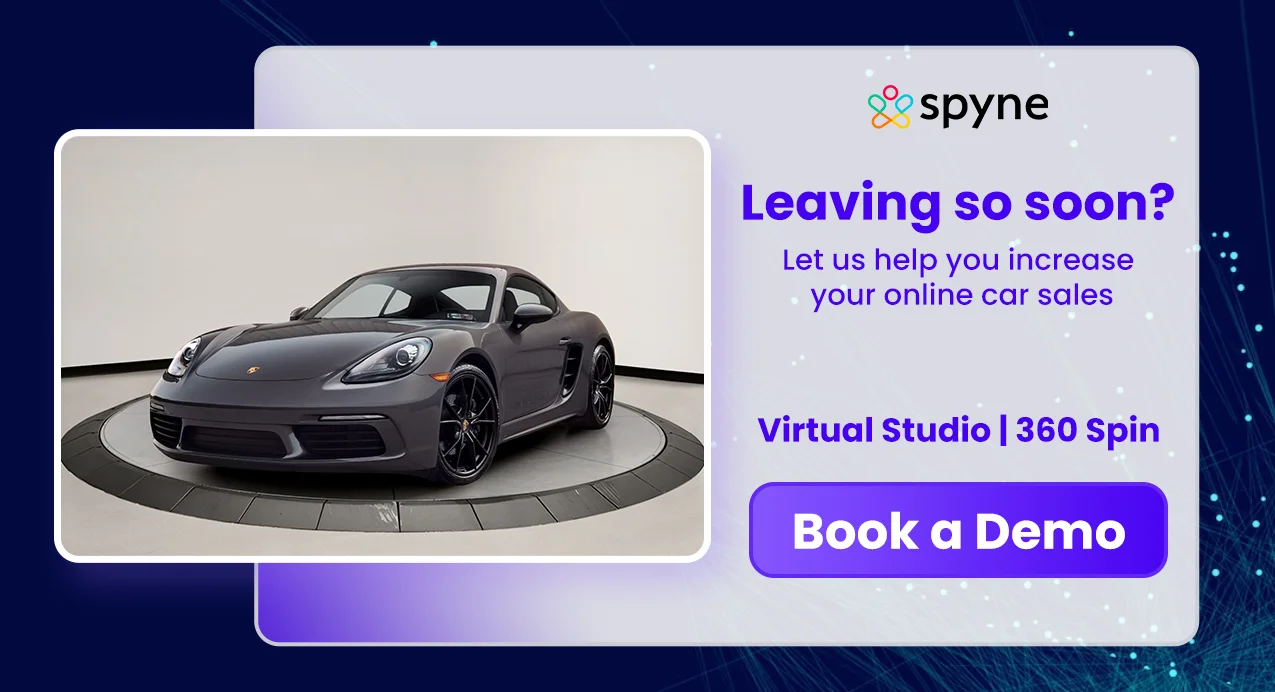Buying a new car not only brings happiness and long night drives but also responsibilities and a lot of paperwork. Like we insure our lives, our cars also need insurance, as everything is uncertain. Insurance companies have many requirements for getting your car insured and claiming its monetary value in times of use. The most common requirement by insurance companies is a car insurance photo inspection. Before you receive the monetary coverage for physical damage or as part of the claims procedure, your insurance company could ask for a picture check of your car.
In this blog, we will explain what car insurance photo inspection is, why you need it, its types and how Spyne can be your savior!
What is a Car Insurance Photo Inspection?

An auto insurance photo inspection is a procedure that involves photographing a car’s physical condition before making a purchase or renewing an insurance policy. These images help the insurance companies determine the current state of the vehicle and locate any prior damage.
Fraud prevention and proper claim settlement are the ultimate goals. For instance, during the auto insurance claims process, the insurers can use the same data to verify whether the damage is consistent with what was already present on the vehicle.
A car insurance inspector evaluates a vehicle’s condition with the use of inspections. Before your insurer issues a policy for a used car, you might need to have your car inspected, depending on your state and your insurance provider. However, a brand-new car usually doesn’t require an examination.

Why Do You Need a Car Insurance Photo Inspection?
Think of the car insurance photo inspections as your insurance policy’s safeguard. It’s like taking a “before” picture, that protects both you and your insurer, in the following ways:
1) It provides you with a clear starting point
A car photo inspection serves as a crucial first step in your insurance coverage journey. When you document your vehicle’s condition through photographs, you’re essentially creating a detailed visual record that protects both you and your insurance provider. This simple yet vital process captures every existing scratch, dent, and feature of your car, establishing a clear starting point for your coverage.
2) Prevention of any fraud
The inspection plays a vital role in preventing insurance fraud, a problem that affects the entire insurance industry.
By having clear documentation of your car’s initial condition, there’s no room for confusion or misrepresentation about pre-existing damage.
This protection not only safeguards the insurance company but also helps maintain fair premium rates for all policyholders by preventing fraudulent claims.
3) Accuracy of the claim
Photo inspections simplify the whole process in the case of accidents. Car insurance inspectors can refer to those first photos taken of your car about its position before and after an incident for faster claim resolution.
Such efficiency of the whole process relieves stress at a difficult moment. Where such necessary documentation is absent, you may experience frustrating delays, disputations over claims, or even denial of claims so that what needs to be a rather straightforward process becomes an ordeal.
By spending the time taking a proper photo inspection, you’re not just checking a box-you’re standing up for your best interests and can make the insurance claim process smoother, too, should you ever need it.
Types of Car Insurance Photo Inspections

1. Pre-Insurance Inspection
The pre-insurance inspection is the beginning of your coverage process. Before issuing your new policy, the car insurance inspector will need a clear picture of your vehicle’s condition – think of it as taking a detailed “before” snapshot.
This initial documentation captures everything from minor scratches to major dents, which establishes a baseline for your car’s condition and helps prevent potential disputes in the future.
2. Renewal Inspection
When your policy approaches the time for its renewal your insurer might request for a photo inspection for car insurance i.e. renewal inspection. This checkpoint helps them track any changes in your vehicle’s condition over the coverage period.
It’s like a regular health check-up for your car, ensuring that any wear and tear or undeclared damages are properly documented and addressed before extending your coverage.
3. Post-Accident Inspection
When accidents happen, post-accident inspections become crucial. These detailed assessments thoroughly document the damage from the incident, helping adjusters accurately evaluate your claim.
By comparing these photos with your pre-insurance or renewal inspection images, insurers can better understand the accident’s impact and process your claim more efficiently.
4. Virtual Inspections
In today’s digital age, AI in auto insurance and virtual inspections are revolutionizing this process. Using artificial intelligence, you can now complete many inspections from your smartphone. This is where Spyne comes into the picture. The AI-powered tools by Spyne guide you through capturing the right angles and details, making the process more convenient while maintaining accuracy.
The technology can instantly analyze damages, verify vehicle conditions, and even help detect potential fraud – all without requiring an in-person visit.
How to Get a Pre-Insurance Photo Inspection
To get a pre-insurance photo inspection, follow these steps:
1. Review Your Insurance Provider’s Guidelines
Each insurance company has different photo requirements. Typically, you’ll need photos of:
- Front, side, and rear views of the car.
- Closeups of the car’s exterior to highlight its condition.
- The odometer to verify the car’s mileage.
- The Vehicle Identification Number (VIN).
2. Ensure Photo Quality
- Use a high-resolution camera for clear images.
- Ensure proper lighting to avoid unclear photos.
- Avoid obstructions to clearly show the car’s condition.
3. Submit Photos Through the Insurer’s Platform
Many insurers allow photo uploads through their app or website. If not, send the photos via email or deliver them in person.
4. Verify Receipt
Confirm with your insurer that they’ve received your photos and ask if additional images are needed.
How Does the Car Insurance Photo Inspection Affect Insurance Claims?
A pre-insurance photo inspection helps in several ways:
1. Determining Pre-Damage Condition
The photos document the vehicle’s condition before any incidents. This serves as a baseline for comparison in case of an accident, making it easier to assess the damage.
2. Faster Claims Processing
Insurers can expedite the claims process by rapidly evaluating the condition of your vehicle and comparing it with images obtained following an accident.
3. Minimizing Conflicts and Frauds
Pre-Insurance photographs protect against abuse of the system by providing a reliable way of determining the true state of the vehicle before claiming to have been damaged. If the vehicle is damaged, the insurance can assess the degree through beyond images.
4. Transparent Premium Rate Setting
When picturing the vehicle, insurance companies adjust their premiums taking into consideration its condition and the modifications that were not included in the list.
What Happens if I Don’t Get a Photo Inspection?
Skipping a photo inspection can lead to several consequences:
1. Delays in Claims Processing
Without pre-incident photos, your insurer may delay claims until they are received, which results in longer wait times for payouts.
2. Potential Claim Denial
If you don’t fulfill the pre-inspection requirement, insurers may deny your claims, especially if fraud is suspected.
3. Higher Premiums
Without photos, the insurer may lack information on the car’s condition, leading to higher premiums to offset the unknown risk.
4. Policy Issues
Some insurers may require the photo inspection to process your policy. Missing this step could result in a delay or denial of coverage.
Spyne’s Role in Car Insurance Photo Inspections
Spyne enhances the car insurance photo inspection process by integrating AI technology. Here’s how Spyne helps:

1. Photo Verification Driven by AI
By verifying important information like the vehicle’s condition, VIN, and odometer readings, Spyne’s AI technology makes sure your photographs satisfy the insurer’s specifications.
2. Accurate Damage Identification
Spyne reduces human mistakes during inspections by automatically detecting damage like dents or scratches, guaranteeing a more accurate assessment.
3. Faster Claims Processing
By automating picture inspections, Spyne speeds up the claims procedure, enabling insurers to evaluate and resolve claims more rapidly.
4. Enhanced Customer Experience
Spyne guarantees a speedier and easier claims process for clients by utilizing faster and more accurate photo inspections.
5. Improved Efficiency
Spyne’s AI expedites the inspection procedure, cutting down on errors and manual labor, leading to a more dependable and speedier resolution of claims.
Conclusion
Car insurance photo inspections are essential for verifying vehicle condition, preventing fraud, and expediting claims. Missing this step can delay claims, increase premiums, or lead to denied coverage. AIdriven platforms like Spyne streamline this process, making it more efficient for both insurers and customers. Completing a photo inspection can save you time, money, and trouble during claims, ensuring that you receive a fair and fast resolution. By using AI, the entire photo inspection process becomes faster and more accurate, providing a seamless experience for both insurers and policyholders.



























